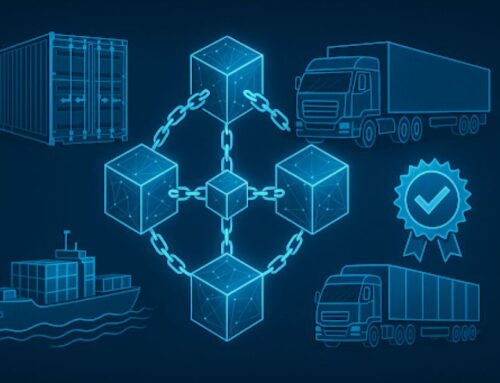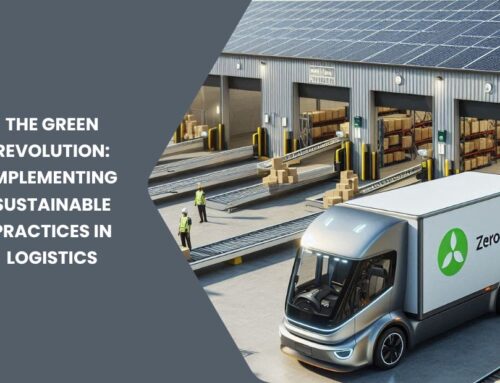If you’ve been managing logistics long enough, you know how costly blind spots can be. Without real-time tracking, you’re constantly playing catch-up—trying to locate delayed shipments, fix inventory gaps, or handle quality complaints after they’ve already affected the customer. That’s where IoT technology steps in. When you connect sensors and smart devices across your fleet, warehouses, and inventory systems, you unlock continuous visibility into every step of your supply chain. This article shows you how IoT helps you move from reactive to proactive by giving you live data that drives better decisions and better service.
Keep Tabs on Every Shipment Without the Guesswork
Traditional logistics often leaves you in the dark after a shipment leaves the dock. You’re relying on periodic updates and hoping nothing goes wrong in between. With IoT tracking devices, that gap disappears. GPS-enabled tags and condition-monitoring sensors give you a live stream of updates on where your cargo is and how it’s doing.
Whether it’s a truck halfway across the country or a high-value shipment being offloaded at a port, you get location, temperature, humidity, and other environmental data in real time. You can track delays, route deviations, or mishandling immediately and reroute or alert teams before customers even notice a delay. That alone saves you a ton on customer recovery costs and helps you avoid expensive contractual penalties.
Make Your Inventory Work Smarter
You don’t just want visibility in transit—you need it in your warehouse too. IoT sensors help you track stock levels automatically by capturing every movement of your inventory. This isn’t about manual stock counts or cycle audits anymore—you’re working with live data. RFID and weight sensors on racks can tell you when product levels fall below thresholds, and they can trigger automatic restocks.
This means you’re keeping inventory lean while still meeting demand. It’s especially useful if you’re running multiple warehouses or coordinating across a global distribution network. The system balances supply with real demand, which means fewer overstocks, less capital tied up, and happier customers getting what they ordered, when they expected it.
Keep Your Fleet Running Like Clockwork
Running a fleet is expensive. Fuel, labor, maintenance—it all adds up. When you add IoT to the mix, you start getting smarter with every mile driven. Telematics devices in trucks give you real-time insights into vehicle performance, driver behavior, idle times, and fuel usage. This data helps you tighten up operations in ways you couldn’t before.
Maybe one route looks efficient on paper but burns more fuel due to stop-and-go traffic. Maybe a truck in your fleet is showing early signs of a mechanical issue based on temperature or vibration data. IoT allows you to fix these issues before they snowball, reduce repair costs, and increase vehicle lifespan. You’ll also reduce empty miles and optimize routing based on live conditions—not outdated estimates.
Keep Product Quality Under Control from Source to Shelf
If you’re shipping temperature-sensitive or fragile goods, you can’t afford to discover damage after delivery. With IoT sensors embedded in packaging or pallets, you monitor conditions from pickup to delivery. Whether it’s food, pharmaceuticals, or electronics, you get alerts if temperatures rise, humidity spikes, or if there’s unexpected movement or shock.
These alerts let you act immediately—whether that means rerouting a shipment, flagging it for inspection, or contacting the recipient in advance. It helps you catch problems early and maintain quality without relying on end-customer feedback to know something went wrong. That’s a major upgrade in both service and operational control.
Get Ahead of Security Threats
Cargo theft isn’t just a risk—it’s a billion-dollar problem globally. IoT gives you tools to spot and stop it before it becomes a headline. With geofencing, you can set virtual boundaries around vehicles, warehouses, or shipping zones. If a vehicle veers off route or a container door opens where it shouldn’t, you’re alerted instantly.
You’re also not limited to just tracking physical movement. Some IoT devices monitor tampering, unauthorized access, or movement in high-risk areas. This kind of visibility helps you act fast—coordinating with law enforcement, alerting nearby teams, or triggering lockdown protocols. The added peace of mind makes a difference for you and your clients.
Automate Your Compliance Without the Paper Trail
Supply chain regulations are getting tighter. From food safety to environmental reporting, you need clean, accurate logs—and IoT can help you build them automatically. Data from your devices gets collected and stored in the cloud, ready to generate reports at the push of a button. No more combing through spreadsheets or hoping someone remembered to log a temperature check.
Audits get easier because every action and condition is timestamped and traceable. If a regulator or partner asks for proof, you have it on hand—organized, accurate, and instant. That kind of reliability makes it easier to meet standards and keep your reputation clean.
Stop Equipment Failures Before They Shut You Down
Downtime is a supply chain killer. It throws off delivery windows, increases costs, and puts pressure on everyone from your floor team to your clients. With IoT-based predictive maintenance, you don’t need to wait for a machine to break to know it’s wearing out.
Sensors monitor things like vibration, pressure, and energy use across your equipment—whether it’s a conveyor belt, packaging system, or vehicle engine. When the data shows something abnormal, the system flags it and you schedule maintenance during low-impact times. You keep things running without unexpected halts or emergency repairs, and you get more life out of your machines in the process.
Benefits of IoT in Logistics
- Tracks shipments in real time
- Automates stock monitoring and restocking
- Reduces fuel and fleet maintenance costs
- Monitors cargo quality en route
- Enhances cargo security with alerts and geofencing
- Simplifies regulatory compliance
- Enables predictive maintenance and avoids downtime
In Conclusion
If you’re trying to stay competitive in logistics without real-time tracking, you’re leaving money and control on the table. IoT gives you visibility across every point in your supply chain—whether it’s a truck on the highway, a pallet in the warehouse, or a sensor on your machinery. You reduce delays, cut unnecessary costs, and keep your customers informed with real data. That’s not just smarter logistics—it’s logistics that actually works the way it should.
Curious about how real-time tech is reshaping logistics? Dive deeper into smart supply chain strategies on my Medium blog: medium. Get ahead of the curve—one insight at a time.









